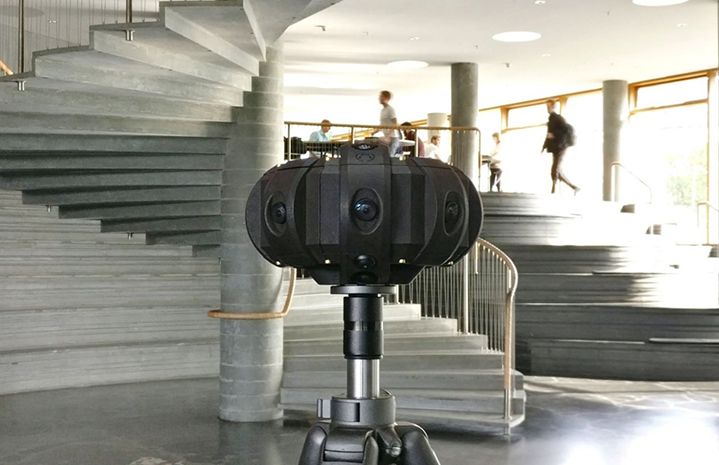Thor is the most versatile professional 360° with cloud-based workflow. Multiple AZ’s VR cameras individually record 12 video streams, and collect positioning metadata via in-built GPS sensor.
AZ’s VR camera and cloud platform are currently introduced to the EU market. Interactive AR 360° streaming (currently at TRL 6) is achieved through:
Multiple AZ’s VR cameras individually record 12 video streams and collect positioning metadata via an in-built GPS sensor. The metadata enables the cameras to become aware of their locations in step F).
Each camera sends all 12 streams( including metadata) to the Cloud for further processing.
Optical flow algorithms stitch all 12 streams into a 360° format for each camera;
The resulting 360° videos are stored conjointly in a content delivery network container, which has a universal timeline that synchronizes all videos to run simultaneously when viewing.
A 360° media player interfaces to this container and allows to view the 360° video;
A real-time AR layer, embedded in the 360° media player, visualizes all metadata and shows the other cameras as position markers. Each marker can be activated via an eye gaze trigger.1. -
Interactive VR streaming is a novel technology with massive potential, enabling new possibilities for audiences who are not able to be at a location physically. AZ technology enables twofold unique benefits:
Production Event broadcasters can stream with multiple AZ cameras simultaneously. Our self-aware VR cameras are key to enabling a maximum level of automation, and hence facilitate easy adoption through first moving TV studios, event broadcasters, and video producers.
Consumption Audiences can revisit respective events in real-time, and jump between each of AZ’s camera’s locations at will. The cloud architecture furthermore creates a P2P ecosystem to host and distribute content directly to the end-user seamlessly. Consumers can view AR- enabled VR streams from any device, without the need for installation of additional software.
On the huge field, one camera, even a 360° one is usually not enough. It is quite problematic both to switch between multiple streaming windows (especially with the hmd on) and to upload multiple streams with different metadata.
VR is a young medium and requires a significant infrastructure push to become adopted to the mainstream. A lack of infrastructure is found on both ends of the value chain of digital media creation: 1.Production Interactivity in a 360° video can only be achieved if the video is embedded on a website, which creates additional costs for web development. An average video production company with two clients per month will spend an estimate of:
5,350€ for PC and 360° camera;
2,600€ per year for software licenses and freelance web developers;
20 hours of work per project.
2. Consumption
The access to interactive content and the device used for consumption is as important as the content creation itself. The US alone counts 2,2 mio. people in a wheelchair who are significantly limited in participating in socio-cultural events like festivals or football matches. Interactive 360 streaming creates freedom in exploration for people who are bound by physical or regional limitations.
